Nature needs YOUR land ethic!
Stay connected through our down-to-earth e-news.
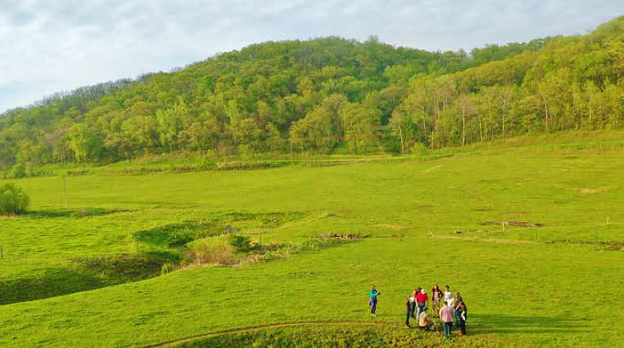

Principles in this story: Cultural Vitality, Ecosystem Integrity, Leadership in Conservation & Species Conservation

This two-part story features two very different models of ecological ethics in action and on private land.
However, both approaches share important beliefs and behaviors including:
• A strong sense of responsibility for stewardship.
• Respect for a place’s cultural and ecological history.
• A commitment to capturing and sharing success stories that inspire others and foster learning.
First, you will hear from a watershed community in Southwest Wisconsin that is working together to conserve biodiversity and is achieving real results. In part two, you will hear insights from the personal conservation journey of Paula Whyman, author of Bad Naturalist: One Woman’s Ecological Education on a Wild Virginia Mountaintop.
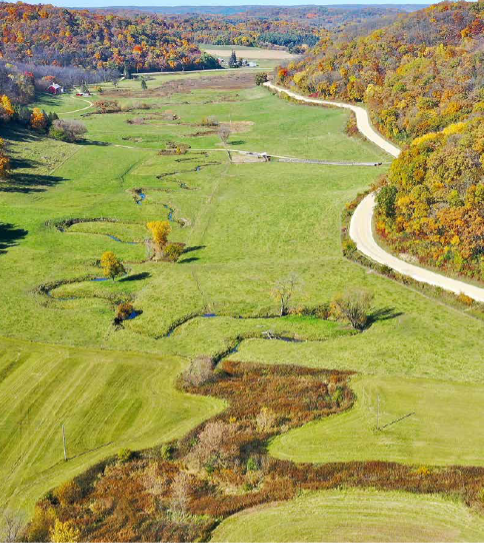
Iowa County, WI—Taliesin, the former home and studio of architect Frank Lloyd Wright (1867-1959), stands on the brow of a hill near the village of Spring Green. In 2014, a development threat to the UNESCO World Heritage Site’s viewshed sparked the beginnings of the Lowery Creek Watershed Initiative. Lowery Creek begins in the springs of the Jones Valley hills, which surround Taliesin.
After successfully fending off the threat of development, the Initiative’s diverse members—working landowners and local organizations, including the Frank Lloyd Wright Foundation and Taliesin Preservation—continue to meet regularly with assistance from the Driftless Area Land Conservancy (DALC), which plays a coordinating role for the partnership.
The Lowery Creek Watershed Initiative’s activities, funded through private sources, include multi-layered mapping of watershed features; water quality monitoring through Water Action Volunteers; and community building through monthly field trips called “Evenings Afield.” Neighbors in and around the area learn from experts, connect with resources, and share strategies for achieving their conservation goals.
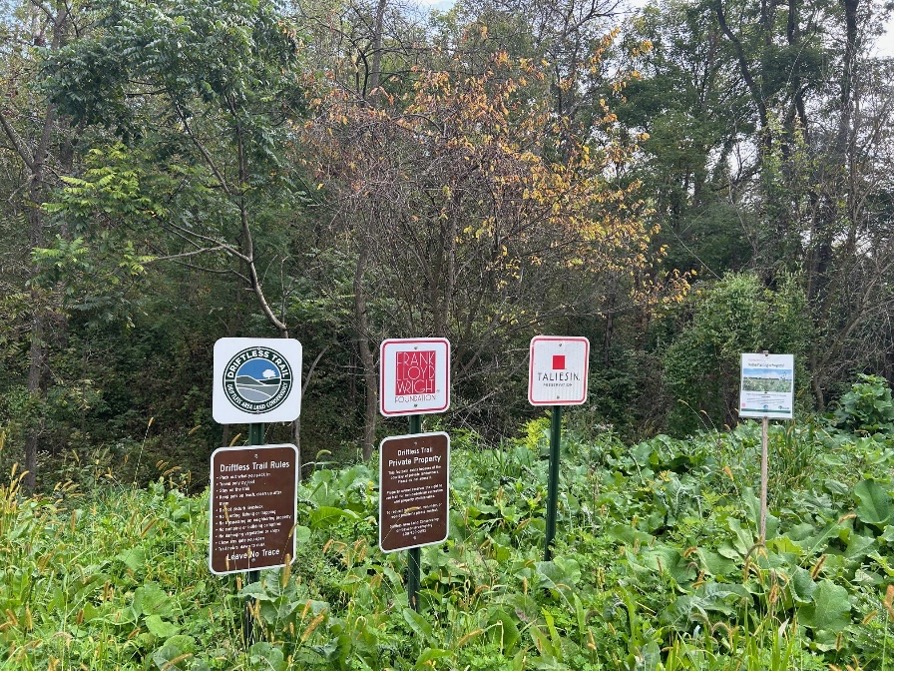
“The most exciting part of this Initiative is the community building,” says Barb Barzen, DALC community conservation specialist. “There have been a lot of great conversations among landowners and other land stewards. Many are people who have an interest in doing restoration but don’t know how to begin, so peer-to-peer learning is helpful.”

Long-time conservation-minded farmer and Initiative founding member Dick Cates and his family are members of the 8,600-acre watershed project and directly care for the portion of the creek that runs through their perennial pasture. Of the Initiative, Cates says, “Together we challenge each other to lift the bar of stewardship higher, and we are held to the imperative of living a land ethic. Nothing could be more fulfilling.”
Well, maybe one thing: “The brookies are back!” Cates and the community are very proud of the once threatened, now thriving population of native brook trout that naturally reproduce in Lowery Creek’s high-quality habitat.

So what do Frank Lloyd Wright and brook trout have in common? A healthier watershed that attracts tourism, provides for humans and wildlife, and the Lowery Creek Watershed Initiative that inspires other groups to take collective action to solve ecological problems.
Efforts that involve controlling invasive plants in order to encourage native species are often characterized as “ecological restoration.” And yet, Paula Whyman, the author of Bad Naturalist (2025), is uneasy with the word “restore.” In 2021, Whyman started her ecological journey on a 200-acre mountaintop in the Blue Ridge foothills, just east of Shenandoah National Park.
“When we talk about ecological restoration, ‘restore’ isn’t really the right word,” says Whyman. “It implies going backwards to some earlier condition. And we can really only go forward. Virginia’s ecology has been irrevocably changed, so to return to a native meadow that existed hundreds of years ago is impossible.”
Whyman still thinks it’s valuable to try. Native plants support a fragile ecosystem of birds, insects, and other wildlife—including humans. Whyman is clear-eyed about her work; she feels a deep responsibility to make the mountain a place where native wildlife can live.
“When we talk about ecological restoration, ‘restore’ isn’t really the right word. It implies going backwards to some earlier condition. And we can really only go forward.”—–Paula Whyman
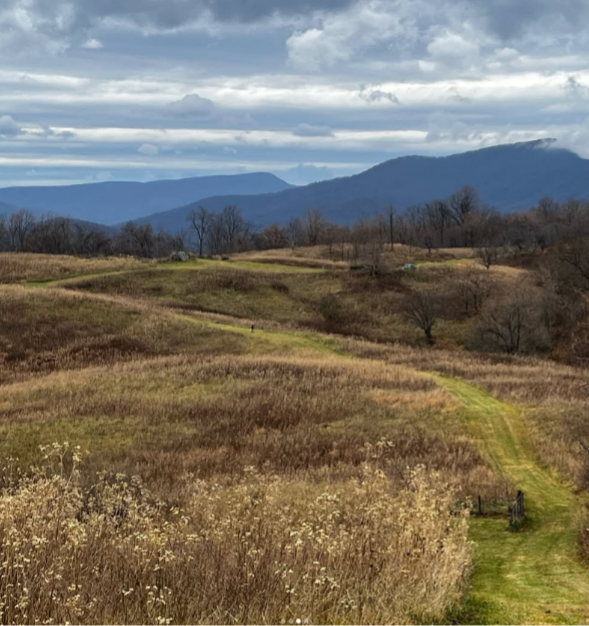
“When we think of prairie, we mainly think of the Midwest, but there was prairie all throughout the South,” says Whyman. “These grasslands were maintained by lightning-induced fires and managed through Indigenous burns. Then came European agricultural practices. Settlers leveled the prairies to plant row crops and deluged the ground with nonnative seeds. The soil was so altered—and eventually fire suppression became the rule—that eventually, when farmers abandoned their fields to nature, the land wouldn’t revert to prairie; it became closed-canopy forest instead.
In just a few years of hard work and many lessons learned, Whyman has developed a conservation philosophy—one that has transformed her relationship with the land and how she practices. Whyman considers herself “a land steward who manages and nudges things in a certain direction.” She explains: “The connection with the land that develops when you are caring for something this way [as a steward] as opposed to controlling things, seems a lot more real and effortless than constantly fighting with it.”
Whyman intends to spend the rest of her life stewarding the mountaintop meadow, having fun with the process, but to also taking her role seriously. She says, “I have hope. There’s always a reason to be hopeful. I hear the call of a Bobwhite quail, I see a kestrel flying. These things give me hope.”
Click to view a 2-minute clip of Whyman on “Land Ethic Live!” The land steward discusses the “help-harm” consequences in conservation through an example involving native plant restoration and prescribed fire, which she considers one of her most important tools.
Whether working as individuals at home–even on an apartment balcony or in a backyard garden–or teaming up with neighboring landowners who share common interests and want to have a landscape-scale impact, efforts made on private land as well as in our public spaces are vital to protecting biodiversity and offer myriad ways for everyone to get involved.
To get started, you might follow Whyman’s sage advice: “Look closely at the place where you live. Be curious. Choose a native plant that attracts a bird or a butterfly–a creature you have an affinity for–to capture your attention, and let that inspire you!”
Such curiosity, once awakened, spreads easily–first to a neighbor, then to a community–until stewardship itself becomes contagious.
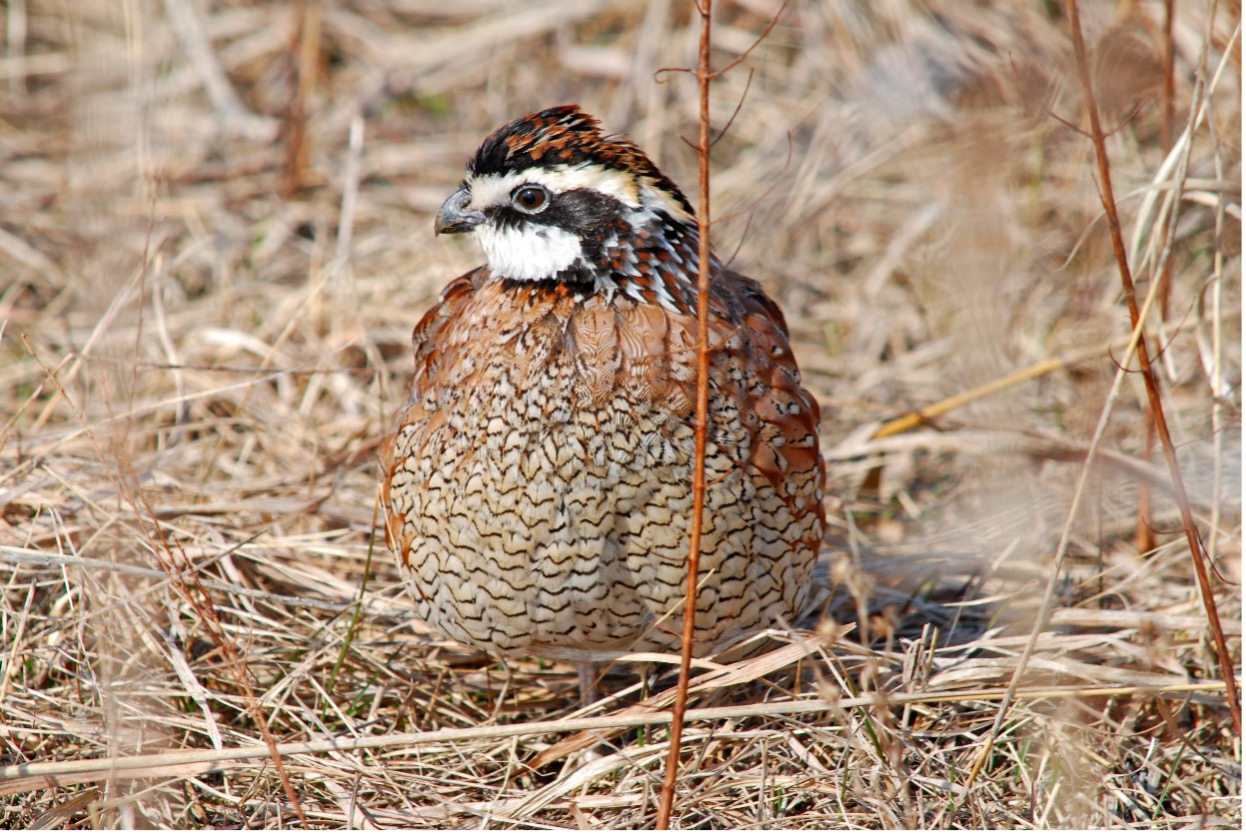
· Richard Cates appeared on “Land Ethic Live!”; the replay is available HERE. For more on the Cates Family Farm, check out the Sand County blog article HERE. To order Cates’ book, A Creek Runs Through This Driftless Land, go HERE.
· HERE is a link to more information on the Lowery Creek Watershed Initiative.
· Paula Whyman appeared on “Land Ethic Live!”; the replay is available HERE.
· For more information about Whyman’s work and to sign up for her newsletter, visit paulawhyman.com. You can order her book, BAD NATURALIST, HERE,
· This story features key topics and concepts in conservation. To explore more, click on a link below for an explanation and additional examples.
This story includes commonly used jargon in conservation. To explore more, click on a concept below which will take you to the Jargon Buster Tool for an explanation and additional examples.
By sharing these stories, you help advance Aldo Leopold's Land Ethic, fostering awareness, inspiring stewardship, and strengthening the collective impact of conservation.

Carrie Carroll is the land ethic manager for the Aldo Leopold Foundation. Carrie is working to share stories about meaningful relationships between humans and public and private land to inspire greater action in conservation.

The Aldo Leopold Foundation was founded in 1982 with a mission to foster the Land Ethic® through the legacy of Aldo Leopold, awakening an ecological conscience in people throughout the world.
"Land Ethic®" is a registered service mark of the Aldo Leopold Foundation, to protect against egregious and/or profane use.
Stay connected through our down-to-earth e-news.